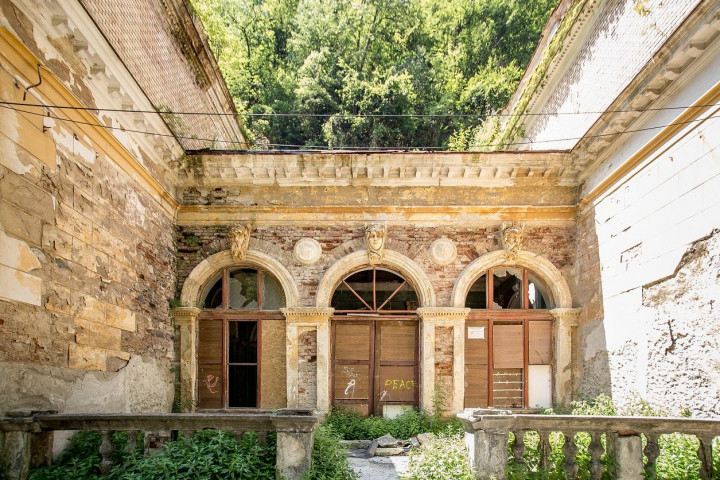14.3.2024, Herculane, RO
As a part of the first European grant that the Neptune Baths will benefit from, the Locus Association is preparing for the summer of 2024 a masterclass dedicated to saving decorative elements. 35 participants will experiment with both historical techniques and state-of-the-art technologies under the guidance of the restoration specialist.
Neptune Baths, the symbol of spa architecture in Romania, proudly bears the label of a monument of national interest, its European value being evident not only through its overwhelming beauty, but also because of its technical attributes and history. The most modern SPA at the time of its inauguration, in 1886, today appears in an advanced state of decay. Despite the difficulties of legislative and administrative nature that prevent the investment of public funds to save the monument, through the project RE: Baths, Gothic churches and miners' houses: the revitalization by young people of the built cultural heritage, the Locus Association takes the necessary steps for the inventory, the saving in digital format and partial reconstruction of decorative facade and interior elements.
Decorative elements - meaning and history
Throughout history, mankind has had multiple methods of transmitting its traditions, beauty and technological stage of development representative for each stage. Books along with all forms of written knowledge were and probably still are the most used. Today, for most of us, the Internet is probably the most handy tool. In the past, however, even in the recent XIX century, one of the ways of transmitting knowledge was also represented by architecture, especially by decorative elements. From easy-to-decipher symbols such as coats of arms with the initials of the family that built the building, to lesser known ones such as symbols representative of the building's function, most decorative elements tell stories, convey messages and teach us about the past. In this summer's workshop we will study and learn about the Neptune Baths through the lens of the decorative elements.
3D scanning, the technology and the study
The comprehensive and complex preparation stage in the summer of 2023 was defined by the study of the decorative elements and the selection of representative ones, followed by their 3D scanning in order to digitize each one in the form of technical drawings that will allow exact replication. At the same time, the project team completed the study of the restoration and reconstruction methods of the elements, from the original ones, to the technological ones according to today's standard. In the process of restoration or even restoration of decorative elements, as a rule, factors such as the stage of degradation of the material, but also the monument tag of the building, its importance and implicitly the relevance of keeping the techniques as close as possible to the original (or vice versa) are taken into account .
Legacy and role
Heritage is not only the cultural fund that has been handed down to us and that we all enjoy now. Heritage is all the more the accumulation of knowledge, tangible or intangible, which we also have the responsibility and duty to pass on to future generations. Thus, today's professionals in the fields that shape our environment are responsible for taking care of history in order to ensure its transmission to future generations. The Treaty on the European Union recalls that one of the objectives of the EU is to "respect the richness of its cultural diversity and to ensure the protection and development of the European cultural heritage". Through the RE: project, together with our partners in Slovakia and Slovenia, we aim to contribute to this noble objective of the European Union.
Masterclass July 2024
Between July 17 and 21, we look forward to welcoming you to Herculaneum Baths, where together we will let Neptune Baths tell its story with the help of decorative elements. We will learn to assess their condition, understand the digitization process and experience all methods of restoration and reconstruction, from historical ones to those developed with the help of current technologies. The 35 participants from Romania, Slovakia and Slovenia will thus exchange experience, practices and cultures.
The Masterclass at Băile Herculane is part of the RE: project, co-financed by the Creative Europe programme.

